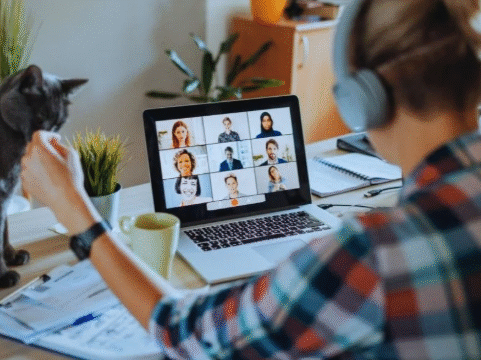In recent years, Learning Management Systems (LMS) have become an essential part of modern education. These platforms provide a flexible and organized way to deliver courses, manage assignments, and track student progress. While LMS platforms are commonly associated with academic subjects like math or science, they offer unique benefits for creative disciplines such as art and music. This article explores how LMS platforms support art and music classes, enhancing teaching and learning experiences for educators and students alike.
What is a Learning Management System?
A Learning Management System is an online software application that allows educators to create, distribute, and manage educational content. LMS platforms facilitate communication between teachers and students, organize course materials, and provide tools for assessment and feedback. They support both in-person and remote learning environments, making education more accessible and adaptable.
The Role of LMS in Art Education
Art education relies heavily on visual and practical learning. LMS platforms are well suited to meet these needs by providing a centralized space for sharing resources, assignments, and student work. Key features that benefit art classes include:
Digital Portfolios and Submission
Students can create and maintain digital portfolios within the LMS, allowing them to showcase their work over time. This feature enables continuous reflection and growth. Instructors can easily review and provide feedback on student submissions, streamlining the evaluation process.
Multimedia Integration
Art teachers can upload videos, images, and interactive content to demonstrate techniques and concepts. This approach supports varied learning styles and makes lessons more engaging. Students can watch tutorials at their own pace and revisit complex topics as needed.
Collaborative Projects and Peer Feedback
Many LMS platforms support discussion boards and group projects, encouraging students to collaborate and critique each other’s work constructively. This interaction fosters a community of learners who support creative development.
Flexible Scheduling and Remote Learning
Art classes often include studio time and hands-on activities. LMS platforms offer flexibility by enabling students to submit work remotely and access lessons outside traditional class hours. This feature is particularly useful in hybrid or distance learning scenarios.
Enhancing Music Education with LMS
Music education presents distinct challenges and opportunities that LMS platforms can address effectively. These platforms provide tools for practice, theory, and performance development, including:
Audio and Video Submissions
Students can record and upload practice sessions or performances for instructor review. This capability allows teachers to provide detailed feedback on technique, tone, and expression without the constraints of in-person lessons.
Access to Learning Materials
Music instructors can upload sheet music, theory exercises, and instructional videos within the LMS. Students benefit from easy access to resources that support independent practice and study.
Interactive Learning and Assessments
Some LMS platforms integrate with live video tools, enabling real-time lessons and virtual rehearsals. Additionally, quizzes and assignments can assess music theory knowledge, helping students track their understanding of key concepts.
Progress Monitoring
The LMS tracks student activity and assessment results, providing both instructors and students with clear insights into progress. This data-driven approach supports personalized instruction tailored to individual needs.
Popular LMS Platforms for Art and Music Classes
Several LMS options cater well to creative education, each with its own strengths:
-
Google Classroom: A simple and widely used platform that supports easy distribution and submission of assignments. It works well for both art and music classes, especially in schools already using Google Workspace.
-
Canvas: Known for its robust multimedia capabilities and customizable features, Canvas offers tools suited for integrating videos, audio, and interactive content.
-
Moodle: An open-source platform that allows extensive customization. It is ideal for schools or educators who need tailored solutions for art and music education.
-
Seesaw: Designed with younger students in mind, Seesaw emphasizes visual and interactive learning, making it suitable for early education art and music classes.
Benefits of Using LMS in Creative Education
The integration of LMS platforms in art and music education offers multiple advantages:
-
Improved Accessibility: Students can access lessons, resources, and assignments anytime, which supports diverse schedules and learning environments.
-
Enhanced Organization: LMS tools help both teachers and students keep track of deadlines, submissions, and feedback efficiently.
-
Increased Engagement: Interactive features such as discussion forums and multimedia content promote active participation.
-
Encouragement of Creativity: Digital tools and collaborative opportunities inspire students to explore new creative approaches and express themselves confidently.
Challenges and Considerations
While LMS platforms bring numerous benefits, educators should also be mindful of potential challenges:
-
Technology Access: Not all students may have reliable internet or devices, which can limit participation in online LMS activities.
-
Training and Support: Teachers may require training to effectively use LMS features, especially for integrating multimedia and interactive tools.
-
Maintaining Artistic Integrity: Some aspects of art and music teaching, such as hands-on studio work or ensemble performances, may be difficult to fully replicate online.
Conclusion
Learning Management Systems offer valuable tools that can enhance the teaching and learning of art and music. By providing flexible access to resources, facilitating communication, and supporting creative collaboration, LMS platforms help educators meet the evolving needs of their students. When thoughtfully implemented, these systems can enrich creative education, making it more accessible, engaging, and effective.
As technology continues to advance, LMS platforms will play an increasingly important role in shaping the future of art and music education, helping students develop their talents and express their creativity in new and exciting ways.






